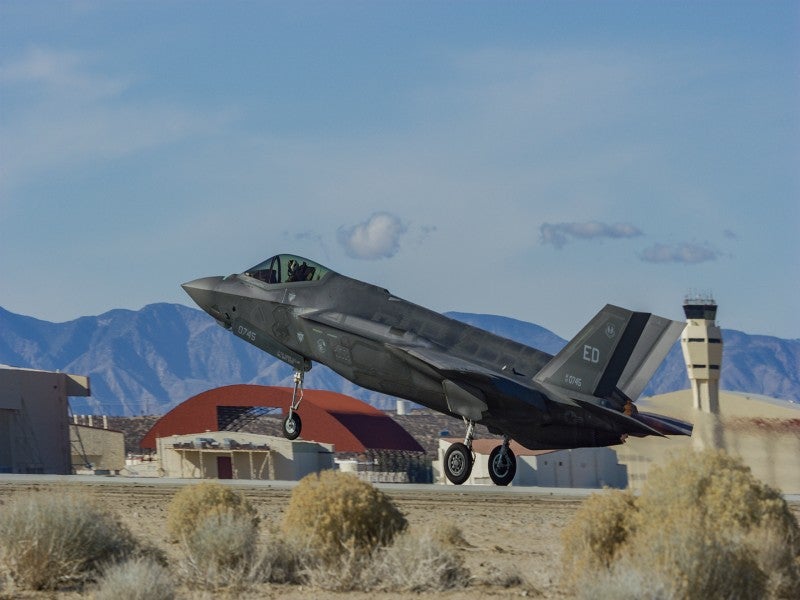
The US Air Force (USAF) has carried out the maiden flight test of an F-35 fighter aircraft in the latest Technology Refresh 3 (TR-3) configuration.
Conducted on 6 January, the test was executed by a developmental test team assigned under the 461st Flight Test Squadron from Edwards Air Force Base (AFB), California, US.
A USAF’s experimental test pilot was deployed to perform the test in a specially instrumented test aircraft with tail number AF-7, which is also the first aircraft to be equipped with the new TR-3 upgrades.
During the test flight, which lasted for 50 minutes, the pilot-operated F-35 jet at a high speed, close to the speed of sound, above the Mojave Desert at a height of 35,000ft.
Before flying the aircraft, the deployed test pilot also conducted a functional check flight to determine its system stability and airworthiness.
The new flight test marks the beginning of a series of developmental and operational flight tests that will be performed throughout the year. The test campaign will assess the safety and warfighting capabilities of the new aircraft configuration.

US Tariffs are shifting - will you react or anticipate?
Don’t let policy changes catch you off guard. Stay proactive with real-time data and expert analysis.
By GlobalDataUSAF F-35 Joint Programme Office programme executive officer lieutenant general Mike Schmidt said: “TR-3 is the F-35’s critical computer processing electronics upgrade that will continue to provide all our pilots with the capability they need to be successful against any adversary.”
The latest TR-3 upgrade is designed to provide computational horsepower to support a wide range of F-35’s Block-4 capabilities, including improved electronic warfare, long-range precision weapons, sensor suites, enhanced data fusion and increased cross-platform interoperability.
All the features will allow combat pilots to identify, track, engage, and counter emerging air, ground, and cyber adversaries.



